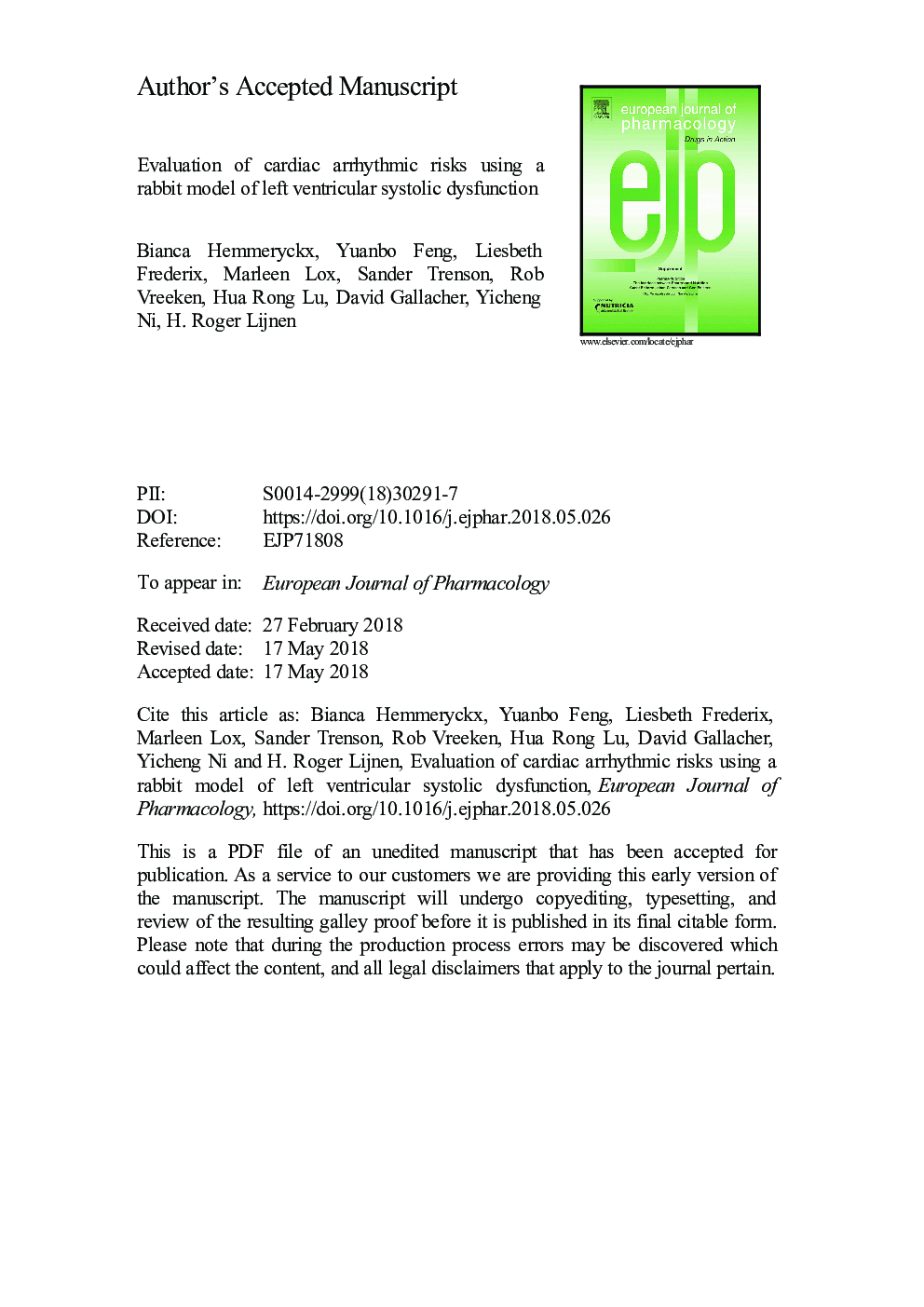| Article ID | Journal | Published Year | Pages | File Type |
|---|---|---|---|---|
| 8528967 | European Journal of Pharmacology | 2018 | 46 Pages |
Abstract
Patients with heart disease have a higher risk to develop cardiac arrhythmias, either spontaneously or drug-induced. In this study, we have used a rabbit model of myocardial infarction (MI) with severe left ventricular systolic dysfunction (LVSD) to study potential drug-induced cardiac risks with N-(piperidin-2-ylmethyl)-2,5-bis(2,2,2-trifluoroethoxy)benzamide (flecainide). Upon ligation of the left circumflex arteries, male New Zealand White rabbits developed a large MI and moderate or severe LVSD 7 weeks after surgery, in comparison to SHAM-operated animals. Subsequently, animals were exposed to escalating doses of flecainide (0.25-4â¯mg/kg) or solvent. Electrocardiograms (ECG) were recorded before surgery, 1 and 7 weeks after surgery and continuously during the drug protocol. The ECG biomarker iCEB (index of Cardio-Electrophysiological Balanceâ¯=â¯QT/QRS ratio) was calculated. During the ECG recording at week 1 and week 7 post MI, rabbits had no spontaneous cardiac arrhythmias. When rabbits were exposed to escalating doses of flecainide, 2 out of 5 rabbits with MI and moderate LVSD versus 0 out of 5 solvent-treated rabbits developed arrhythmias, such as ventricular tachycardia/ventricular fibrillation. These were preceded by a marked decrease of iCEB just before the onset (from 4.09 to 2.42 and from 5.56 to 2.25, respectively). Furthermore, 1 out of 5 MI rabbits with moderate LVSD and 1 out of 7 MI rabbits with severe LVSD developed total atrioventricular block after flecainide infusion and died. This rabbit model of MI and severe LVSD may be useful for preclinical evaluation of drug (similar mechanism as flecainide)-induced arrhythmic risks, which might be predicted by iCEB.
Keywords
Related Topics
Life Sciences
Neuroscience
Cellular and Molecular Neuroscience
Authors
Bianca Hemmeryckx, Yuanbo Feng, Liesbeth Frederix, Marleen Lox, Sander Trenson, Rob Vreeken, Hua Rong Lu, David Gallacher, Yicheng Ni, H. Roger Lijnen,
